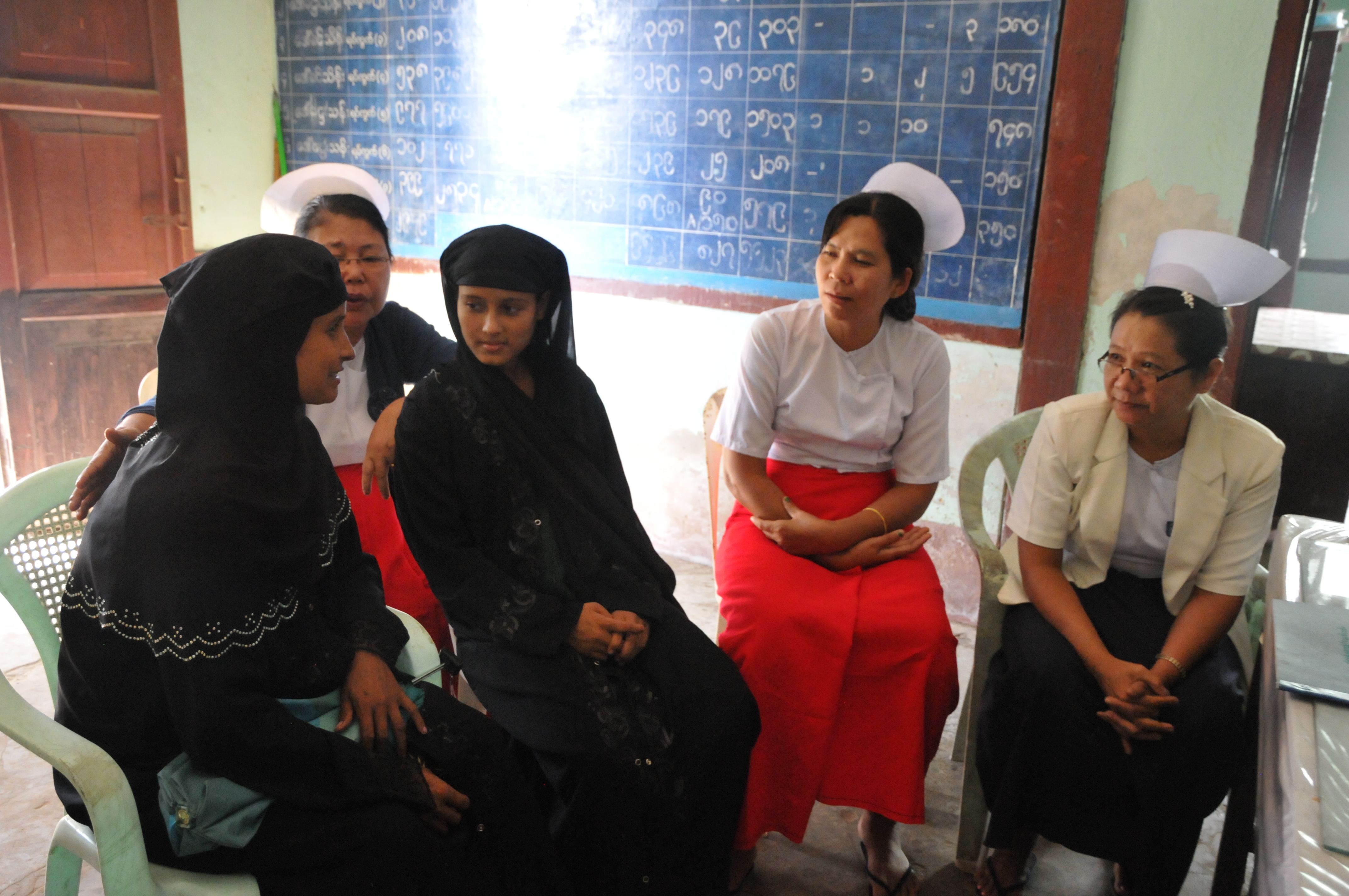|
|
|
While conflict continues in Myanmar in the aftermath of the military coup, the political crisis in Rakhine State is often overlooked. Here the Rohingya emergency shows no sign of ending, but the growing strength of the United League of Army/Arakan Army is changing the landscape on the ground. In the aftermath of a ‘humanitarian’ ceasefire, Kyaw Lynn analyses political trends in this commentary, examining why the ULA/AA has become an influential actor in any likely resolution of the Rohingya crisis. Inter-community approaches and understandings will be key.
These commentaries are intended to contribute to a broader understanding of the many challenges facing the country and its peoples.
See the complete list of all the Myanmar commentaries.
|
|
|
|
The Emergence of the ULA/AA and Question of the Rohingya Crisis
A Myanmar Commentary by Kyaw Lynn
|
|
 Rohingya women at a clinic of the Ministry of Health and Sports / Photo credit TNI
Rohingya women at a clinic of the Ministry of Health and Sports / Photo credit TNI
|
|
|
While the question of Rohingya repatriation remains under grave challenge, the movement and exodus of the Rohingya population from inside and outside of Arakan (Rakhine State) has lately been increasing. According to the October report of the Burma Human Rights Network, the number of Rohingya arrested for travelling without official permission during 2022 is 2,075, which is higher than the previous year. In recent weeks, it was also reported that around 250 Rohingya people on two boats attempting to approach Malaysia were trapped in the Malacca Straits due to engine failure. The reports said that there was another boat carrying around 180 people but still missing.
The implications are clear. For Rohingya people who seek to migrate to a foreign country the dangerous sea route has become a critical alternative because they are more likely to be arrested through land routes by car or train inside Myanmar. Meanwhile the process intended to protect the rights of the Rohingya people continues at the International Court of Justice (ICJ) in The Hague. But this is doing little to alleviate the situation of Rohingya communities inside Arakan or in the refugee camps in Bangladesh who find less hope for their future. International actions appear to be at an impasse.
As these crises continue, new questions have arisen during the past year in finding solutions to the Rohingya crisis with the emergence of a new actor, the United League of Arakan/Arakan Army (ULA/AA), in the politics of Arakan. This is especially the case in northern parts of Rakhine State bordering Bangladesh where the majority of the Rohingya population lives.
|
|
|
|
|
|
|
|